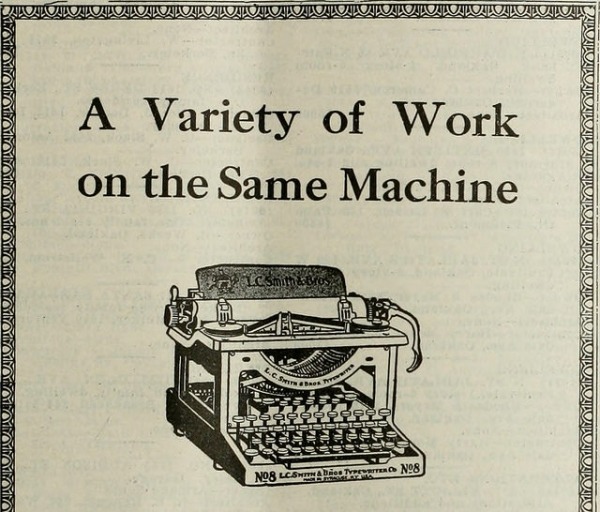I gave my husband, the bear, my copy of David Mitchell’s Cloud Atlas (an amazing book). After the first chapter, he looked up from the pages and said, “Gah, what a pretentious A*hole! He just dropped the first narrative right in the middle and jumped to a completely different story. Is he going to do this with every chapter?!”
“Keep reading,” I said.
When he finished, as he handed back my copy, the bear said, “That was an awesome book!”
I know.
If you’re not familiar with Mitchell’s stunning novel, it’s structured like a Spanish fan. A series of independent narratives with repeating motifs and patterns unfold into an arc that collapses neatly into itself at the end.
Mitchell’s book—and my husband’s initial frustration with it—demonstrates the prime directive of fiction structure: be consistent. The bear wasn’t alone in his confusion. If you look at Amazon’s page for the book, you’ll see a product alert telling buyers that the sudden shift is not a misprint but a narrative technique. Mitchell uses it to great advantage, but the first truncated story comes a quite a shock. You haven’t yet learned the rules of his fictional world, so you assume it must be a mistake. It’s up to Mitchell to prove otherwise. He has to coax the reader to accept it and stay with him instead of demanding a refund from the bookseller.
If you ask readers what they want out of a book, they’ll say things like fast pace, exciting action, or compelling characters. But all of your labor in those areas will come to naught if the reader encounters something that they cannot accept as possible. This isn’t limited to technical structure, either. It extends to circumstances, events, or character actions. The story readers believe will be consistent and compelling in all of these areas.
I’m not talking about suspension of disbelief here, which is a separate issue. Readers love to do that, and will gladly go along when you say something ridiculous like “So there’s this boarding school in Scotland where kids from all over the UK go to learn magic.” I mean that, at every step, you want them to buy in when you tell them that something has happened. You need them to believe you when you describe a choice a character has just made. When they stop believing you, you lose them.
To keep their interest and acceptance, you must first be consistent, which comes down to five basic things.
- Narrative Physics. You can set up your imaginary world just about any way you want, as long as you clearly define its laws for the reader, then make sure that your characters—and you—strictly obey them. It’s fine to say: “Harry is an ordinary guy who can do magic.” But if Harry can suddenly take a punch in the nose from a troll without flinching, you lose us. Ordinary guys can’t do that.
- Characters as People. When you love someone, their imperfections seem to fade. And we authors love our characters. It can be hard to give them flaws, put them in really painful circumstances, or let them behave really badly. But you must. No one is wholly good or wholly bad—your readers know that. And they won’t identify with someone who does absolutely everything right….or wrong. Even a blind squirrel, etc.
- Characters as Casualties. You need to plan for bad things to happen to even your good people. Disasters are going to have to befall someone, and readers’ own life experience says that it isn’t just jerks and losers. I once evaluated a manuscript where the author was clearly making one of five brothers as unlikeable as possible. Why? He needed someone to die in the climax, and he could not bear to kill his darlings. Who would have cared if the Death Eaters had killed Pansy Parkinson in the final battle? Nope, one of the Weasley twins had to go. Or the readers would have escaped unscathed, unchanged, and unimpressed.
- The Visible Wake. We can certainly be caught off guard. Tsunamis and comets do both come out of the blue. That’s ok. But your reader should be able to look back and see the path an event traveled. Big events leave a wake, a trail of impact or destruction. They should be able to glance backward through your story and see what brought us to the present moment.
- Letting go of Loose Ends. There’s a difference between delighted shock (“No way!”) and skepticism (“Say what?”). You may have a really juicy bit of character background or a killer plot twist you are dying to share. But if you can’t find a simple, plausible way to work it in, you may have to let go. Don’t try shoehorn it into the narrative. You’ll only bog down your prose with lengthy explanation or derail your action and damage the pacing. J.K. Rowling has often said that Albus Dumbledore is gay, but that she didn’t see that fact fitting neatly into Harry’s epic journey. So she allowed it to be implied.
So there you have it: five structural issues, five ways your reader is counting on you to be consistent. Some rules they’ll already know by heart—chapters shouldn’t end in mid-sentence, for example. Others you will demonstrate in the course of your narrative—i.e., in this world, all the photographs move. Once you’ve told your readers how the fictional universe works, it’s your job to make sure things play out in a way that is both exciting and consistent. That’s the kind of story readers believe.


